Tunic is an enigma. I play as a nameless fox who awakens on a beach. Traveling inland, I come across temple ruins spread along the archipelago, through a forest, and up into the side of a mountain. First equipping the player character with a stick, then later upgrading them to a sword and shield, I fend off monsters that prowl the ruins. While exploring, I uncover new tools that open new paths through the world and upgrades that make the player character more powerful and resilient. Challenging boss fights serve as milestones, requiring patience and precision to overcome. The adventure is played from an isometric perspective, granting me a bird’s eye-view of the action and the world’s secrets.
I list all of these attributes quickly at the outset because they are pleasant and ordinary.
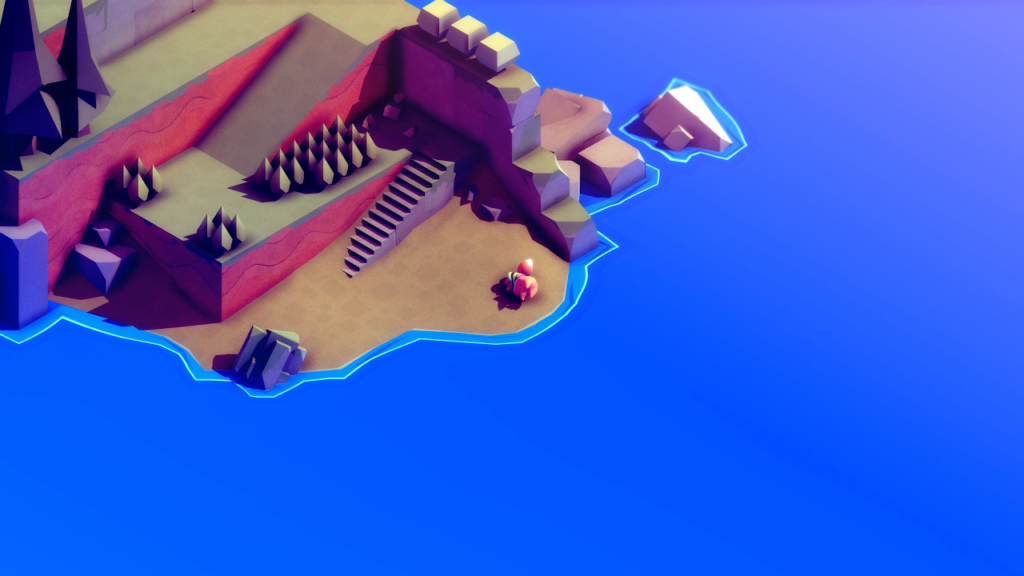
What makes Tunic enigmatic is that in spite of its Legend of Zelda-inspired action-and-adventure trappings, over time it develops into almost a pure puzzle-centric experience. By its final hours, I can even choose to ignore most of the combat as I scurry across the landscape peeling away yet another layer of mysteries from the landscape. There’s one particular mechanic that reveals these secrets, and it’s what makes Tunic special in the crowded indie videogame ecosystem.
Videogame manuals are a dead artform. Most videogames do not include manuals and haven’t for decades. Those that do often treat them as novelties, nostalgic touches to complement retro design evocative of the 8- and 16-bit eras when manuals were not only commonplace, but expected. They were treasure troves of original art, and more significantly, they often were the only source of context and direction. If I wanted to know the story, what the player character’s goals are, and how to direct them with the controller, I would have to find that information in the manual. With improvements to in-game tutorials and the rise of the internet as the fount of all knowledge, manuals began to disappear from boxes. It simply wasn’t worth the effort and expense to design, print, and distribute them anymore.
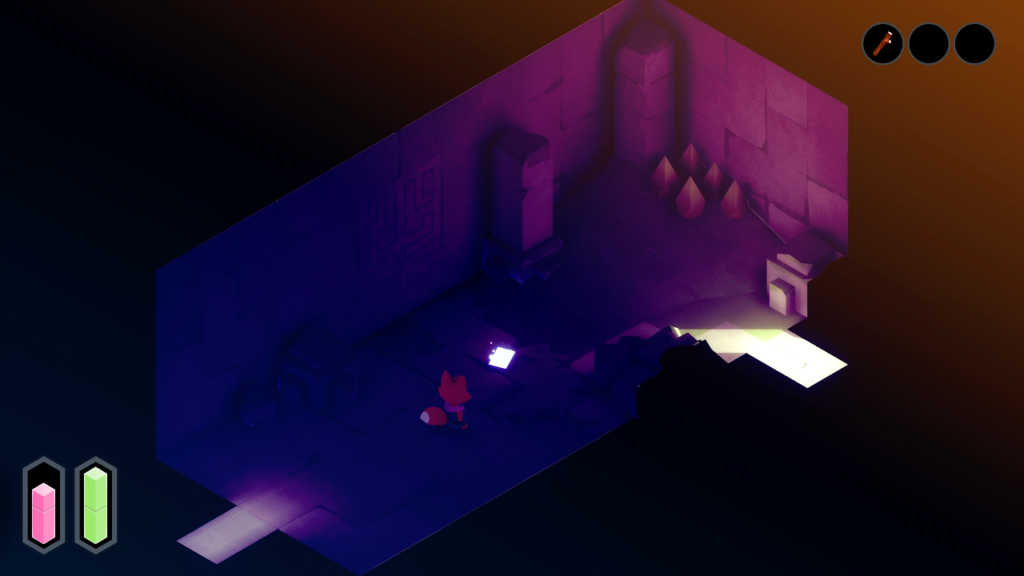
Tunic has a manual, but being a digitally-distributed videogame, it does not come packaged in a box with a pile of highly recyclable advertisements. I discover the manual strewn across the environment, one page at a time and usually out of sequence. Finding and deciphering these pages is how I delve into and ultimately conquer the world’s secrets. It’s one of my favorite game mechanics in recent memory.
I find the first manual page behind a locked door a short way inland from the beach. Upon picking it up, I see a high-resolution “scan” of the page, as though it has been cut from a NES manual. One side of the page has a diagram explaining Tunic’s UI. I barely glance at it, since the UI is self-explanatory to an experienced player.
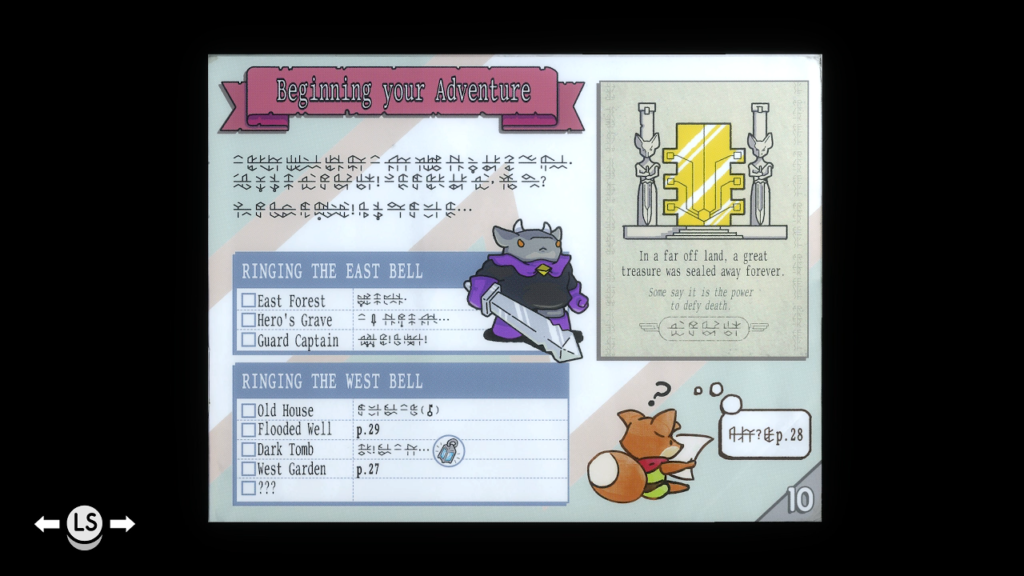
More interesting is the page’s other side. Much of the text is written with characters from a fictional language, but enough is in English for me to glean valuable information. A red banner at the top reads “Beginning Your Adventure.” Beside it, a box shows a golden door, and written beneath it the words “In a far off land, a great treasure was sealed away forever.” The rest of the page is a checklist guiding me to two goals: Ring the East Bell, and Ring the West Bell.
Until this point, my goal in Tunic has been a mystery. Only the adventure’s familiarity makes it approachable. An island needs to be explored. Monsters need to be killed. Items need to be collected. Doors need to be unlocked. The page gives these tropes context which older videogames provided in their manuals. I am seeking a great treasure behind a golden door. The first steps towards this door are to ring bells found in the east and west ends of the map. The checklists will help me to accomplish these goals.
Yet this single page reveals only the first steps of a long and mysterious adventure the manual guides me upon.
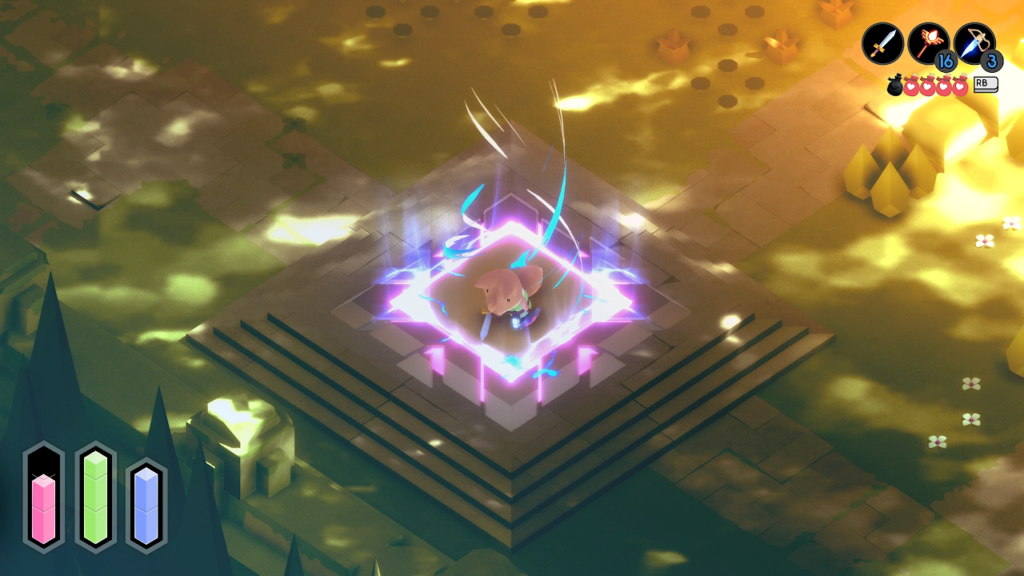
Subsequent pages I discover reveal more of Tunic’s intricacies. Some explain the player character’s abilities, but they do not confer these abilities. They reveal abilities he always had. There’s nothing stopping me from upgrading the player character’s health or attack power as soon as they awaken on the shore, but the only way for me to know these mechanics exist is to discover them through experimentation, or stumble across the manual page explaining it.
Other manual pages are maps of the various regions and dungeons I explore. These maps contain an extra layer of useful information. If I squint at their finer details, I can spot delicate hand-written notes drawn onto the maps, revealing safe routes I can take through hazards and hidden secrets not marked on the “original” map.
It is one page in particular that hints at one of Tunic’s best-hidden secrets.
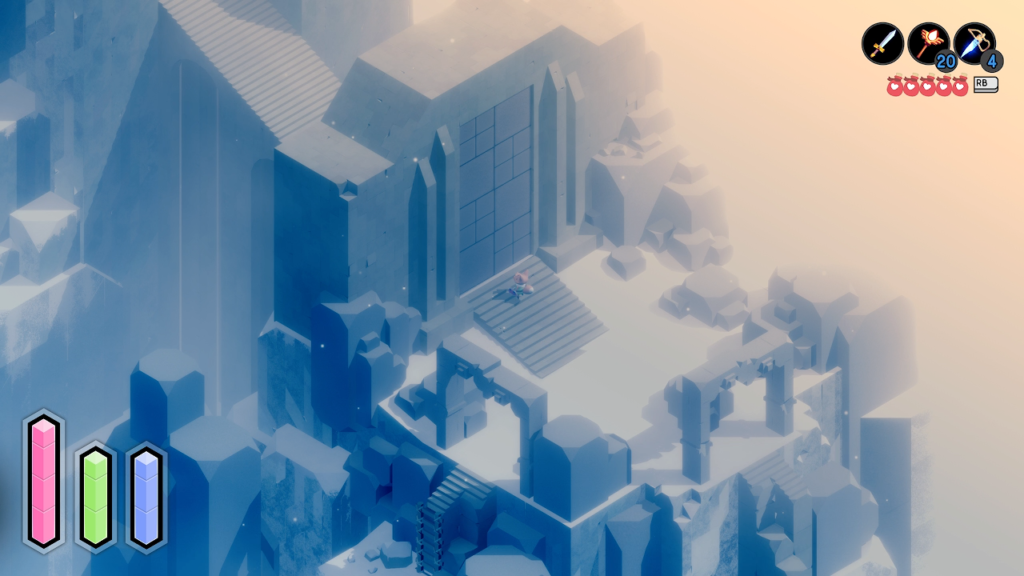
Early in the adventure, I discover a door set high into the mountains. Made up of dozens of interlocking squares that glow with magical energy, it has no apparent handle or visible lock. Opening this door is Tunic’s ultimate mystery, though I won’t find the information I need to solve it until I find one of the last missing pages. This page reveals the Golden Path.
I don’t want to describe the Golden Path in too much detail because it is, without hyperbole, one of the most incredible puzzles I’ve ever solved in a videogame. To say too much about it would be to rob you of the joy of experiencing it for yourself. Solving the puzzle requires me to hunt down every manual page scattered across the world, as each puzzle step is quite literally woven into the manual’s graphics.
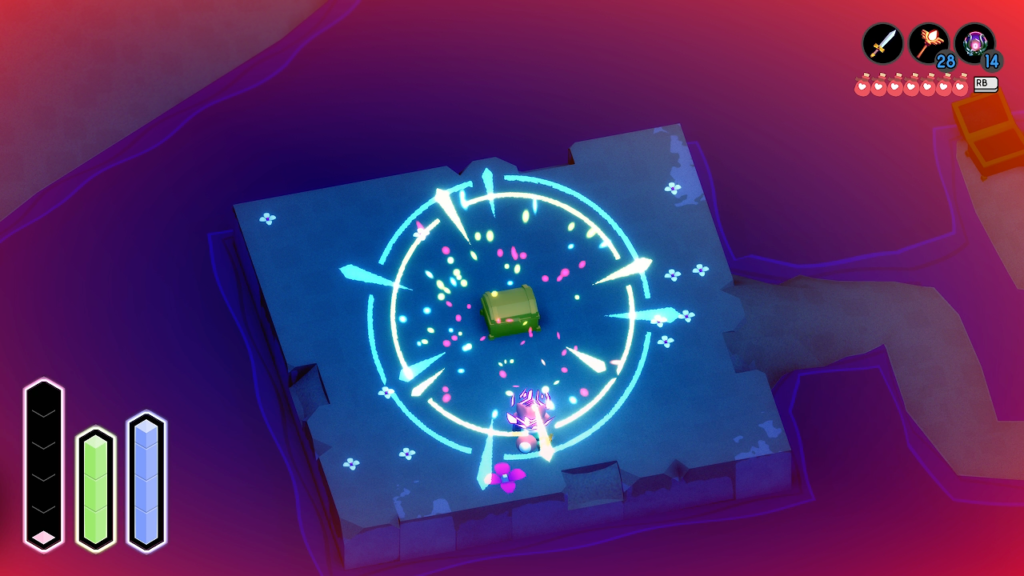
This is also where Tunic stumbles hardest. Just finding the page which reveals the Golden Path requires me to master every inch of the world twice over, first conquering all of the bosses and gathering the requisite macguffins, then revisiting each area following the obligatory plot twist. With the page in hand, the manual is mostly complete . . . except for one more missing page, which contains the last vital clue I need to finish the Golden Path. Getting this page requires me to rescue Fairies, whose existence I only learn about from the same page that tells me about the Golden Path.
Rescuing the fairies and earning the last page sends me out on an arduous third scouring of the world to solve Tunic’s most arcane puzzles. I confess: I use a guide to find them. I am so excited by the Golden Path that to find myself immediately thrust away to a parallel set of puzzles to complete makes me feel nothing but contempt for them. I am frustrated at being presented with something I am excited to do, then told I have to complete a tedious and extraneous chore before I can do it.
Despite my ill will, returning at last to the Door in the Mountains with the final Golden Path clue clutched in my hands restores my giddy enthusiasm. In the moment I am frustrated by the Fairies. In hindsight I find myself with little resentment for them.
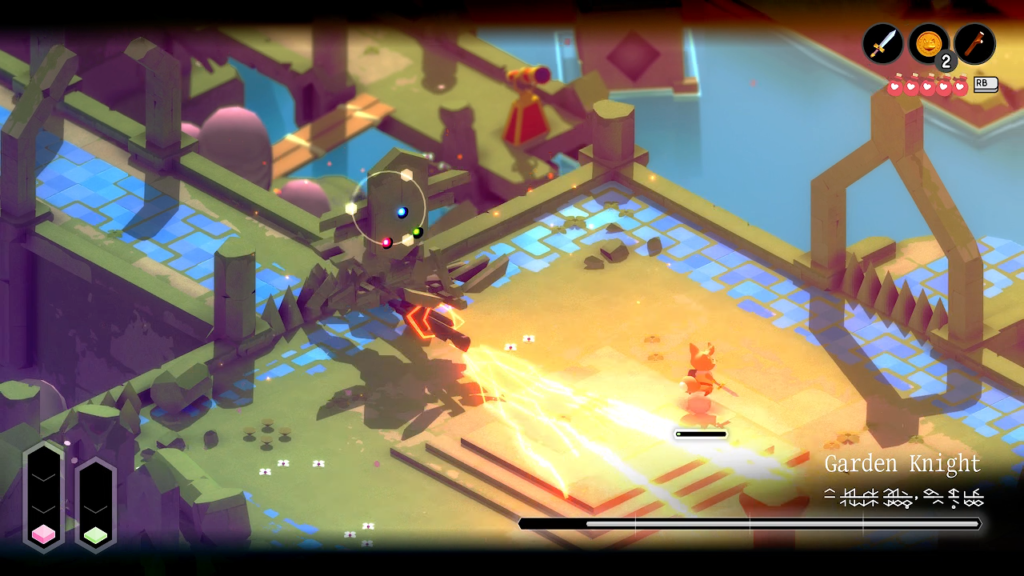
I do not recommend Tunic for the action-adventure videogame it first presents itself as, which is average at best. I whole-heartedly recommend it for the mysteries layered on top of it, revealed by the manual pages I discover while exploring the world. Yet even these mysteries are not perfect; the assembled manual tantalizes me with its intricate ultimate puzzle, then immediately detours me onto a far less interesting, much more tedious collection sidequest before I am allowed to solve it. It’s a pacing blunder that drags my entire experience down. Nevertheless, the Golden Path is one of the most remarkable puzzles I’ve ever solved, and it’s the single best reason to give Tunic your time.